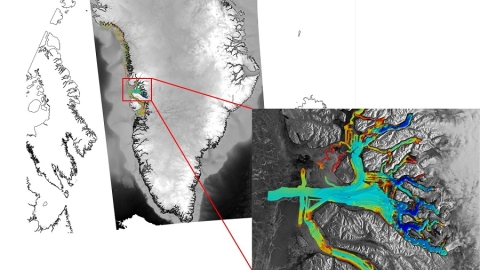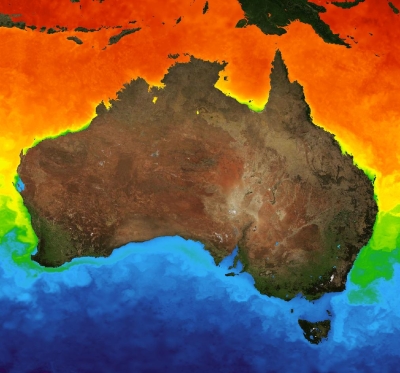NASA’s Physical Oceanography Distributed Active Archive Center (PO.DAAC) is pleased to announce the public release of the Oceans Melting Greenland (OMG) Singlebeam Echo Sounding (OMG_L2_Bathy_SBES_Gridded; doi: 10.5067/OMGEV-SBES1) and Multibeam Echo Sounding (OMG_L2_Bathy_MBES_Gridded; doi: 10.5067/OMGEV-MBES1) Bathymetry datasets. The five-year OMG mission began in 2015 and is a NASA Earth Venture Suborbital mission designed to improve estimates of sea level rise by addressing the question: To what extent are oceans melting Greenland’s ice from below?
This is critical information, since Greenland’s melting ice affects the whole world. In fact, Greenland’s ice sheet contains enough water to raise global sea levels by 7.4 meters (25 feet), according to the OMG mission website. Using airborne, in situ, and ship-based observations, OMG measures changing water temperatures on the continental shelf surrounding Greenland and how marine glaciers are reacting to the presence of warm, salty Atlantic Ocean water. The complicated geometry of the sea floor around Greenland steers currents on the continental shelf and often determines whether water from the Atlantic can reach into Greenland’s long, narrow fjords and interact with coastal glaciers. Knowledge of these pathways is a vital component in understanding the interaction between the oceans and ice sheet, and OMG facilitates improved measurements of the shape and depth of the sea floor in key regions.
OMG datasets are discoverable through the PO.DAAC dataset information pages, which also provide access to technical documentation and information on data citation. For more information about the OMG mission, please see PO.DAAC’s OMG mission webpage.


